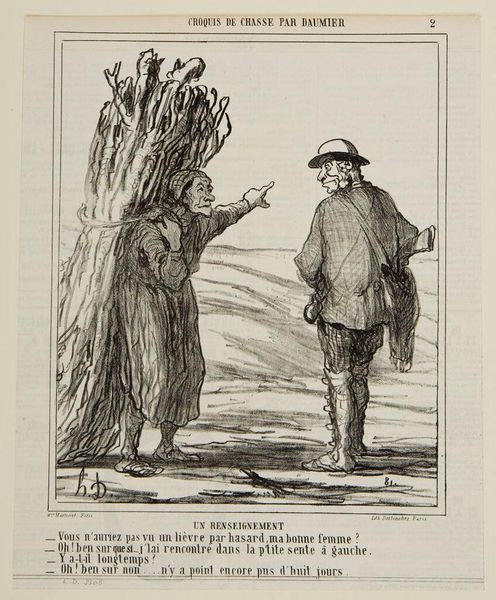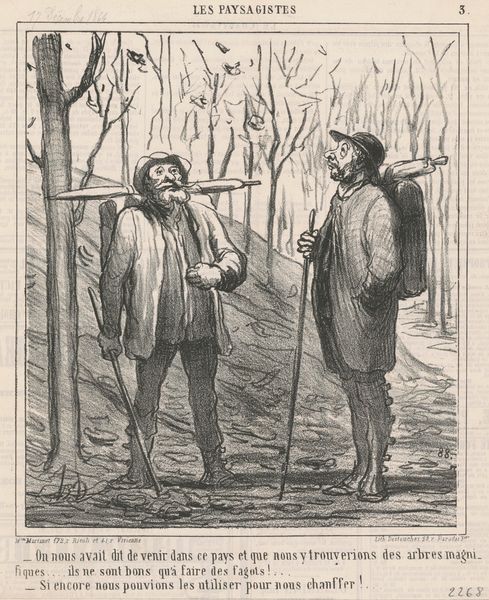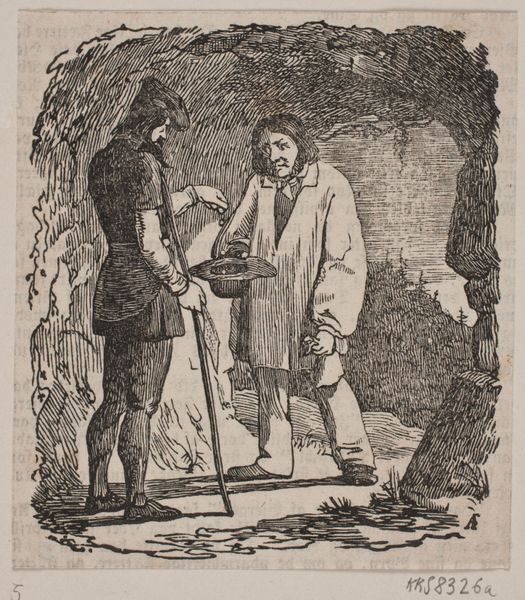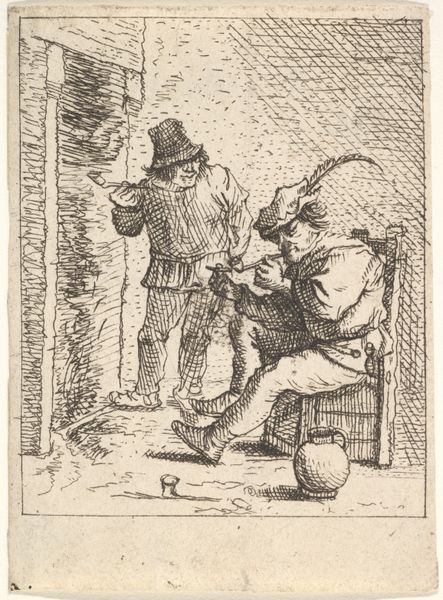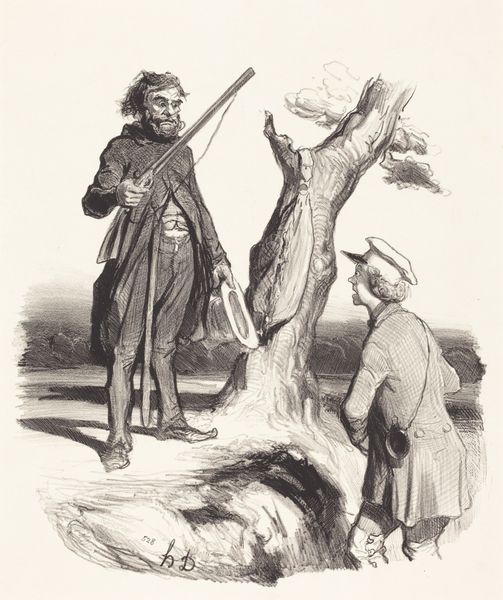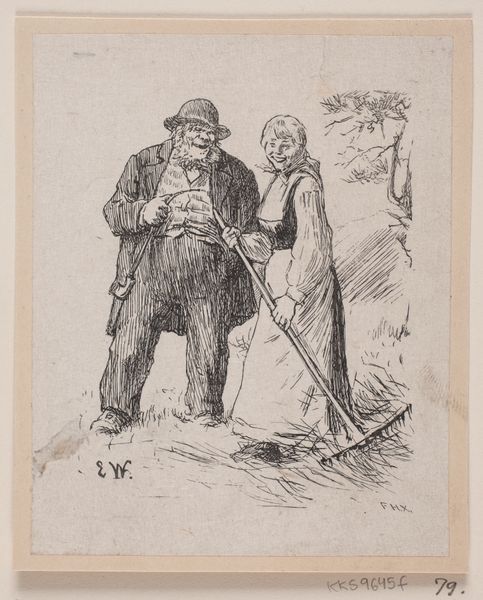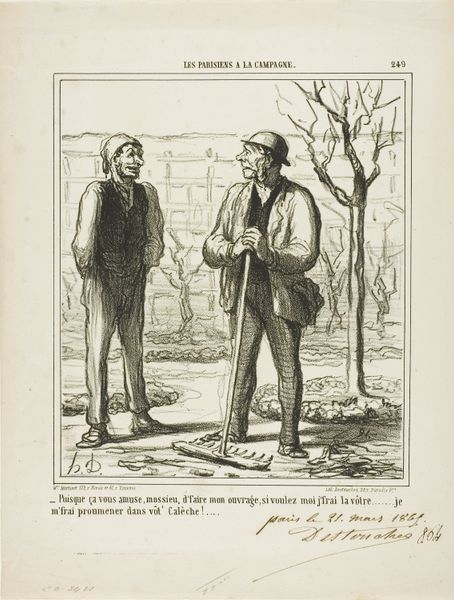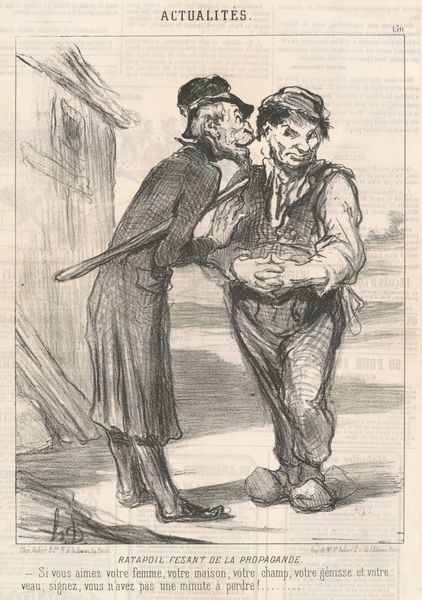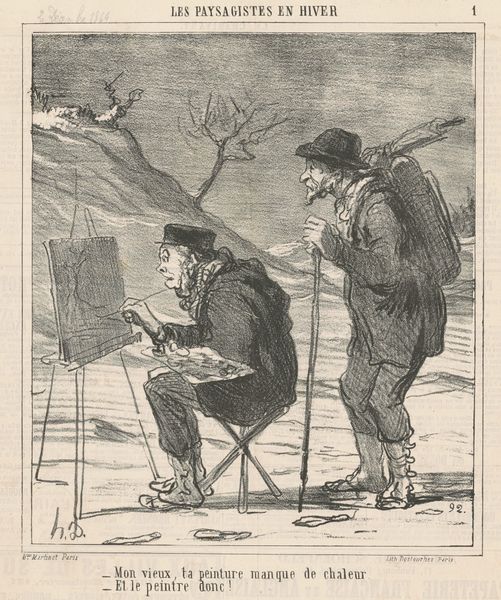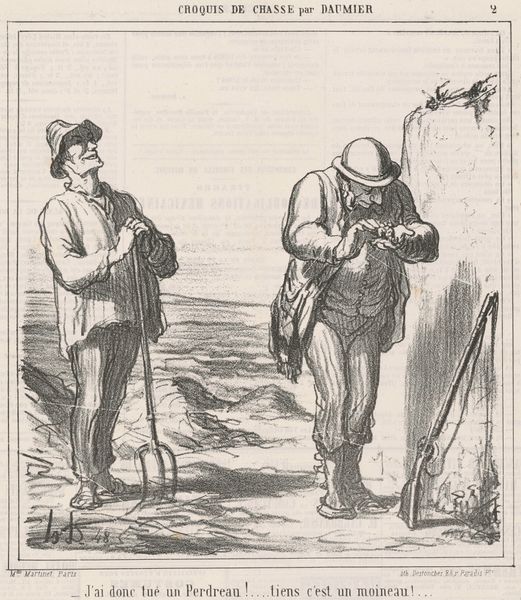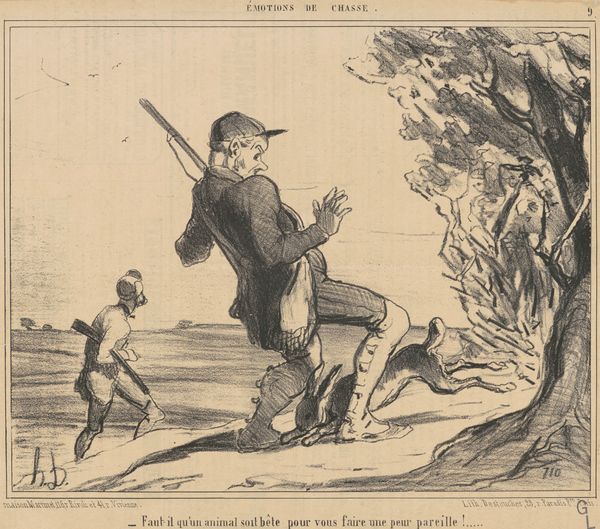
drawing, lithograph, print, ink
#
drawing
#
lithograph
# print
#
caricature
#
figuration
#
ink
#
romanticism
#
comic
#
genre-painting
Copyright: National Gallery of Art: CC0 1.0
Editor: This is "Un Renseignement," a lithograph from the 19th century by Honoré Daumier. I’m struck by the stark contrast between the figures and the almost barren landscape. It feels satirical, especially given the woman’s exaggerated pose and the hunter's peculiar attire. What stands out to you, focusing on its form? Curator: Primarily, the dichotomy between the densely packed lines describing the woman, burdened with wood, and the relative openness of the hunter’s figure. The artist uses line weight and density to visually represent their contrasting social positions, or perhaps, their roles in this exchange. Note also the angularity and harshness in the rendering of the woman’s face and hands compared to the hunter’s relatively softened features. What does that asymmetry suggest? Editor: Perhaps it suggests a commentary on social disparity, with the harder lines reflecting a life of labor. But how much does this reflect social commentary versus caricature for purely comedic effect? Curator: Observe how the lines lead your eye. Daumier meticulously crafts a visual narrative, drawing the gaze from the expressive hands, central to the dialogue, to the vast expanse of the land. Is it merely to amuse or to make us contemplate the relationship between the individual and their environment, shaped by economic circumstances? Editor: I hadn’t considered how the linework itself functions as social commentary. It is fascinating to consider how formal choices reinforce the themes of the work. Curator: Exactly. By attending to the artist’s structural choices, we decipher its core meaning. It serves as a reminder that art communicates meaning through the language of form as much as it does through subject matter.
Comments
No comments
Be the first to comment and join the conversation on the ultimate creative platform.
